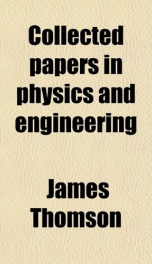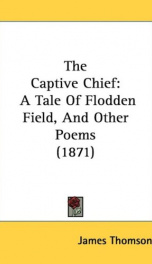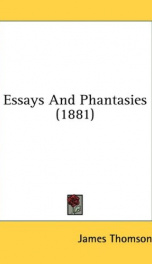collected papers in physics and engineering

Purchase of this book includes free trial access to www.million-books.com where you can read more than a million books for free. This is an OCR edition with typos. Excerpt from book: Obituary Notice By Dr J. T. Bottomley, F.R.S. [From the Proceedings of the Royal Society, VoL Mil. 1893.] James Thomson, lately Professor of Civil Engineering and Mechanics in the University of Glasgow, was born in Belfast on February 16, 1822. His father, a mathematician of very high order, was, in the first instance, Mathematical Master and Professor of Mathematics in the Royal Belfast Academical Institution; but in 1832 became Professor of Mathematics in Glasgow University. James Thomson, and his brother William, Lord Kelvin, entered the classes at Glasgow University at an unusually early age. They were never at school, having received their early education at home from their father. They passed through the University together, both with high distinction, the two lads usually obtaining the first and second prizes in each of the classes they attended. At a very early age also James Thomson showed evidence of considerable inventive genius. When he was about sixteen or seventeen he invented a mechanism for feathering the floats of the paddles of paddle steamers. Steamboats, even on the Clyde, were comparatively novel in those days; and the invention was looked on with much interest by the Clyde engineers to whom it was shown. Unfortunately, from a commercial point of view, however, it turned out that another method of accomplishing the same object had been invented and patented only a few months earlier. After passing through the University curriculum, James Thomson took the degree of M.A. with honours in Mathematics and Natural Philosophy at the age of seventeen [eighteen]. As he had decided on adopting civil engineering as his profession, he went, in the autumn of 1840, to the office of Mr Macneill (afterwards Sir John Macneill), in Dublin. But unfortunately...
Info about the book
Author:
Series:
Unknown
ISBN:
0404064221
Rating:
4/5 (2)Your rating:
0/5
Languge:
English
Users who have this book
Users who want this book
What readers are saying
What do you think? Write your own comment on this book!
write a commentif you like collected papers in physics and engineering try:
Do you want to read a book that interests you? It’s EASY!
Create an account and send a request for reading to other users on the Webpage of the book!







